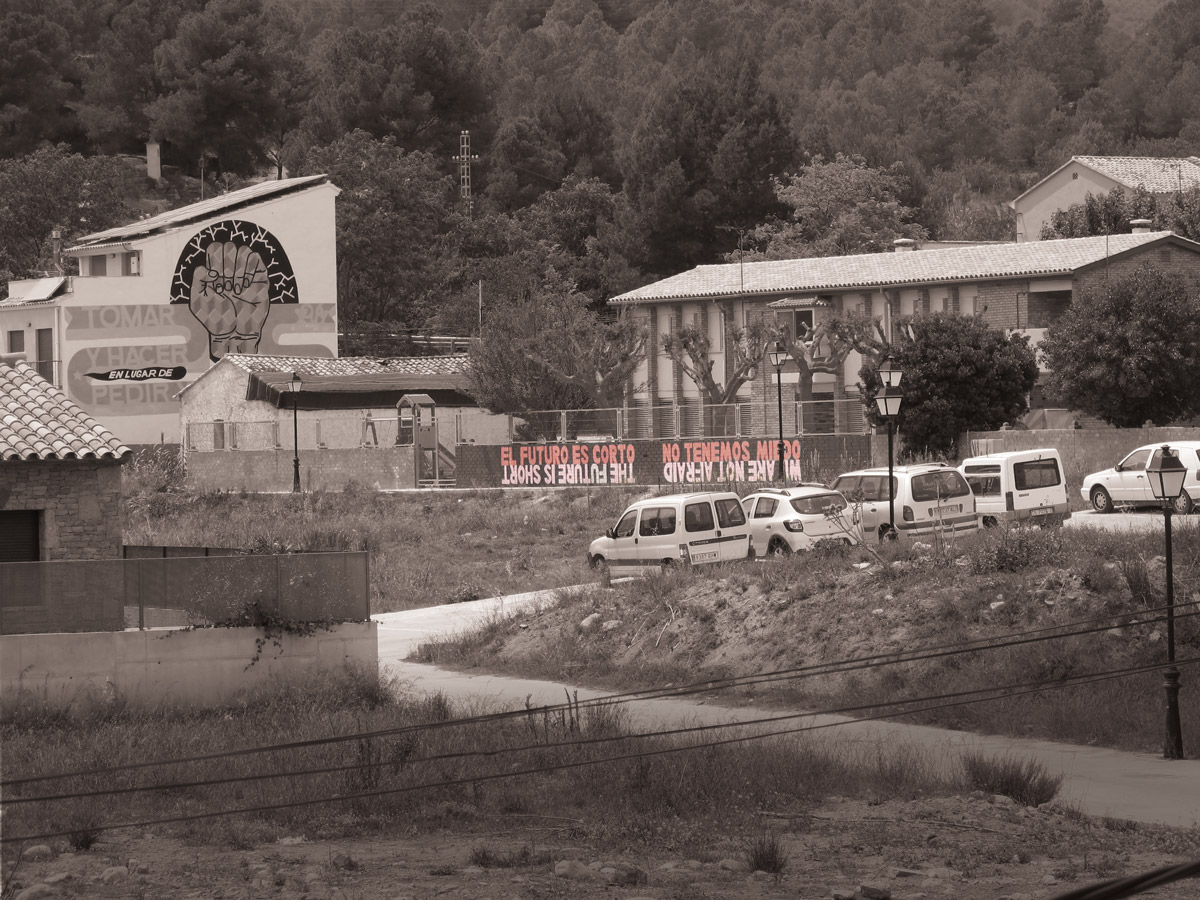Cómo Vivimos (How We Live)
summarises the life wisdom of the four elders of the Spanish hill town of Fanzara: José Gascó (born 1925), Vincente Santolaria (born 1934), Pilar Castillo (born 1936) and Fina Martí (born 1940).
Fanzara is the home to MIAU, The Museo Inacabado de Arte Urbano (The Unfinished Museum of Urban Art). The entire village has, in effect, become an open air museum of international street art. The village had been selected as the site for a new toxic dump. The community successfully opposed this unwanted development and MIAU was born out of that concerted, collective act of resistance.
Over lunch, the elders shared their life experiences with Firrell and this provided the raw material for the artist’s text projections onto their faces:
El Futuro Es Corto (The Future Is Short)
reflects the world view of the elders nearer the end than the beginning of their lives.
No Tenemos Miedo (We Are Not Afraid)
relates both to the opposition to the toxic dump and to the inevitable brevity of life.
Cultiva Ajos. Juega a las Cartas. 3 Céntimos la Apuesta. (Grow Garlic. Play Cards. 3 Cents a Bet)
was also suggested by the elders as the recipe for a good life (unrealised).
The photographic portraits combine these texts, reflecting something of the inner nature of the subject, with the sitter’s external likeness to create a composite portrait of inner and outer truth.
The same texts are painted on the wall of the school in Fanzara so that the youngest inhabitants encounter the wisdom of the eldest each day.



